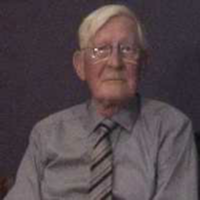
Newsletter 5
Spring 2004
Updated on 29Mar2004
Spring 2004
Updated on 29Mar2004
Published by the Hawker Association for the Members.
Contents © Hawker Association
Contents
GROUND ATTACK AND THE TYPHOON
On the 8th October last, David Ince gave a fascinating talk based on his experiences flying Typhoons with 193 and 257 Squadrons, from the Normandy landings until the end of the war in Europe, earning a DFC on the way.
David outlined the origins of ground attack by the RFC during World War 1 using the DH5 and the Sopwith Camel for strafing German troops and supply columns. By the end of the war the specialised Camel Trench Fighter and the Sopwith Salamander had twin, depressed Vickers guns and protective armour although the latter was thrown out by the pilots to restore performance, a flattened steel helmet on the scat being substituted to protect vital parts. After the war the importance of close army support was forgotten, the single seat fighter bomber being abandoned. Not until the Hurricane, armed with rocket projectiles, was the concept revived.
Failing to meet pre war RAF eyesight standards, David joined the Royal Artillery, serving with them for 18 months before being seconded to the RAF. He encountered the Typhoon for the first time at Duxford while attached to a Mustang squadron, and fell for it! The type had its faults: poor rear view and difficult egress until the tear drop canopy was introduced; carbon monoxide in the cockpit causing oxygen to be used full time; bad seat vibration rumoured to cause infertility, alleviated by a sprung seat and cured by a four bladed propeller.
Rear fuselage failures caused fatal accidents. Reinforcing the structure was no cure and the cause was found to be fatigue failures of elevator mass balance brackets leading to violent nose down pitching and the airframe breaking up. The Sabre engine suffered repeated sleeve valve failures but Bristols were directed by DG Engine Development to help and the problem was solved by the correct choice of alloy steel and the Sabre then became one of the most reliable of engines.
The air war moved higher but the single stage supercharged Sabre was an engine for low altitudes where the Typhoon was more than a match for the FW 190s on their 'Baedecker' raids on the South Coast. Flown by a changing breed of fighter pilots the Typhoon was also demonstrating its effectiveness in ground attack. By the spring of 1944 there were 18 Typhoon squadrons, 11 armed with rocket projectiles (RPs) and 7 with bombs.
Meanwhile David was training on brand new Hurricane IICs, fresh out of Langley, and Mustang Is. Then the seconded army officers were posted to the Naval Bombardment Pool before conversion to the Spitfire and on to 2nd TAF 84 Group Support Unit. From here he successfully applied for transfer to Typhoons.
He found that the Typhoon "was certainly different" steps unconventionally on the starboard side, propeller rotation opposite to virtually all other allied fighters so it swung to starboard on take ofF whilst the Hurricane, Mustang and Spitfire all swung to port; an accident waiting to happen. Later when testing a P 5 1D David wound on the wrong rudder trim, swung badly and got airborne just before running off into mud!
In David's words: "Aboard the Typhoon, sitting high ahead of that teardrop canopy with the gunsight reflecting straight onto the armoured windscreen, the view was magnificent. You felt surrounded, almost cosseted, by seven tons of strength and security. You could feel the pedigree, like a big, bold version of the splendid, confidence building, Hurricane, with a good protective ton of Sabre up front." 1n spite of its size the Typhoon was easy and responsive to fly. Stable, except marginally so in pitch, with well harmonised controls. The swing on take off was easy to control unless using 30 degrees of flap with 1000 lb bombs. It was good to find the undercarriage and flap levers on the left no changing hands on take off like the Hurricane and Spitfire. Aerobatics took up a lot of sky but were very satisfying the Tyffie gave me some of the best slightly barrelled slow rolls of my life (jet aircraft apart)." "The approach was highly stimulating and the landing easy. The aircraft yawed quite noticeably as the undercarriage came down and with full flap, throttled back and in fine pitch, the rate of descent was extraordinarily high. Perfect for the traditional fighter break as you let down towards the runway in sections of four, aircraft line astern, trying to pull up one by one with metronome precision. Perfect because, more than any other aircraft, that high rate of descent allowed you to create the highest, tightest possible circuit for the leader almost a tilted loop and the steepest curved approach imaginable. The fighter break was invented by the Americans but the Typhoon brought it to perfection."
After 19 Typhoon hours David crossed the Channel to Normandy's dusty airfields which led to more engine failures and the need for Vokes air filters to be installed. Flown to England for modification they returned with ferkins of beer on the bomb racks. The Typhoon, which was a splendid gun platform, hammered away with cannon and bombs at enemy strong points, troop concentrations, HQs, trains, convoys, fuel and ammo dumps and, with RPs, against the German armour. Prisoner interrogations showed that the rocket Typhoon was a splendid enemy morale buster. Unlike other dangerous weapons you could see them aiming at you personally, at your tank.
When Typhoons became involved in risky, target recce. photography, David developed tactics and hardware to aid survival and success. He had a long focus lensed camera fitted pointing forward through a cannon aperture in the wing leading edge. Now it was no longer necessary to fly straight and level as for downward looking cameras or to orbit the target as for obliques. The photo sortie became virtually identical to low level bombing and yielded fantastically good results.
David gave much more fascinating detail of the ground attack battle using the Typhoon but we don't have enough space to do him justice. Suffice it to say that he fought with Typhoons to the bitter end. Try to find his book "Combat and Competition" published by Newton, at aviation book fairs (sadly, it's out of print) for the full story which includes the ETPS and a second flying career as a champion glider pilot.
The Association was privileged to have this excellent illustrated talk, of great interest to all Hawker people, from someone speaking from first hand experience. We were also pleased to welcome David's guests: Mrs Julien Butler (David's navigator and aviation enthusiast), Barry Nicholson (sporting pilot), Philip Scott (microlight pilot and ex racing driver), S/Ldr REG Sheward DFC (RP Hurricane IV survivor, Typhoon pilot and Squadron Commander), his son, Robert Sheward (Typhoon enthusiast), John Fairey (son of Sir Richard and 'total aviation person'), and Brigadier (rtd) Ed Tate

David Ince